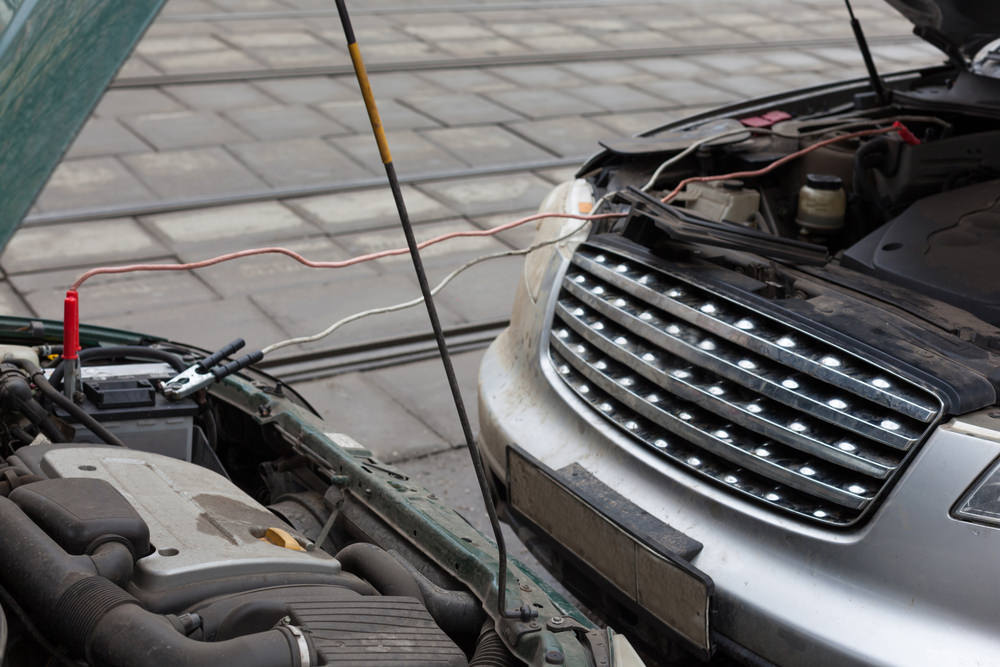

Regardless of what type of car you have, eventually you may need to jumpstart it. While jumping a car is fairly easy, it can be a bit dangerous if basic precautions are not taken.
If certain battery problems are causing your car to lose battery charge (a leaking battery for example), you should have it serviced or replaced. The best advice is: if you are unsure in any way about what you are doing, call a pro as you can seriously damage your car as well as the other vehicle you're using for the jumpstart.
Everything you need to know about jumpstarting a car
Tools You Will Need
A pair of high quality clean jumper cables. The clamps should be rust free.
A pair of splash-proof polycarbonate safety goggles rated for auto repair
Another vehicle that has a fully charged battery that is the same voltage as the car being jumped.
The “Do’s” when jumpstarting a car
Read your owner's manual before attempting a jumpstart. Newer cars often have jumpstart lugs where the cables need to be attached, instead of directly to the battery terminals. In addition, some manufacturers do not allow jumpstarting the vehicle at all, and doing so may void the warranty. In some vehicles, certain precautions must be taken such as removing a fuse, or turning on the defroster. The owner’s manual should spell out any precautions that must be taken.
Verify the voltage of the battery in the vehicle doing the jumping. If they do not match, serious damage can occur to both vehicles.
Park the cars close enough for the cables to reach, but they should not touch.
Turn the engine off in the car with the good battery.
Unplug any accessories (like cell phone chargers); the power surge generated by the jumpstart can short them out.
Both cars should be in park or neutral with the parking brake engaged.
Headlights, radios, and turn signals (including hazard lights) should be off in both vehicles.
Put on rubber gloves and safety goggles before starting the procedure.
The “Don’ts” when jumpstarting a car
Never lean over the battery of either car.
Do not smoke while jumpstarting a car.
Never jumpstart a battery if fluids are frozen. This could lead to an explosion.
If the battery is cracked or leaking do not jumpstart the car. It could lead to an explosion.
The pre-check
The first thing you should do is locate the battery in both vehicles. In some cars the battery is not in an accessible spot in the engine compartment, which is where jump-start lugs come in to play. If this is the case, locate the lugs.
Once the battery or lugs have been located, examine each and make sure you know where the positive and negative terminals are on both batteries. The positive terminal will have a (+) sign along with red wires, or a red cover. The negative terminal will have a (-) sign and black wires or a black cover. The terminal covers may have to be moved to reach the actual terminal.
If the terminals are dirty or have corrosion, use the wire brush to clean them off.
Jumpstarting the car
In order to properly jump-start a car you will need to create a circuit that carries the current from the live battery over to the dead one. In order to do this successfully the cables should be connected in this exact order:
Connect one end of the red (positive) jumper cable to the red (+) positive post of the dead car battery.
Connect the other end of the red (positive) jumper cable to the red (+) positive post of the fully charged car battery.
Connect one end of the black (negative) jumper cable to the black (-) negative post of the fully charged car battery.
Connect the other end of the black (negative) jumper cable to a metal part of the dead car that is unpainted, as far from the battery as the cable will reach. This will ground the circuit and help prevent sparking. Connecting it to the dead battery carries a risk of the battery exploding.
Verify that none of the cables are touching any engine parts that will move when the engine is started.
Final step
Technically, there are two ways to complete the jumpstarting of a car:
The Safest Way: Start the car with the fully charged battery and let it sit idling for roughly five to ten minutes to charge the dead battery. Turn off the engine remove the cables in the reverse order and be careful to not let the cables touch which can result in sparking. Attempt to start the engine of the car with the dead battery.
The Other Way: Start the car with the fully charged battery and let is sit idling for roughly five to ten minutes to charge the dead battery. Attempt to start the car with the dead battery without shutting off the fully charged car. If the car with the dead battery refuses to start, let it sit for a few more minutes. If the car with the dead battery still will not start, very carefully readjust the red (+) positive cable to the terminal in hopes of getting a better connection. Reattempt to jumpstart the car. If the vehicle starts, remove the cables in the reverse order they were put on, being careful not to let them touch.
Remember to thank the person who helped jumpstart your car!
The vehicle with the dead battery should be allowed to run for 30 minutes if possible. This will let the alternator fully charge the battery. If your battery continues to lose a charge, contact a certified mobile mechanic from YourMechanic to diagnose the problem.



